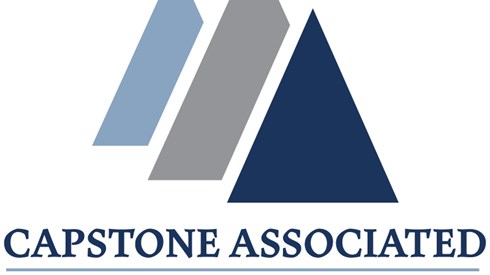Risk Pools Have Served the Insurance Market Admirably

February 05, 2019 See Related Articles and Videos

A new resource from the Captive Insurance Companies Association (CICA), "Commercial Insurance and Captive Insurance Industry: Commonly Accepted Practices," addresses misperceptions and outlines commonly accepted practices for risk pools. The guidance document reviews the structure and use of risk pools, addresses some of the common misperceptions, and provides guidance on commonly accepted insurance practices.
In light of the questions raised by the US Tax Court's opinion in Reserve Mech. Corp. v. Commissioner, 2018 Tax Ct. Memo LEXIS 87, the document sets out to address questions about insurance transactions and how they are commonly constructed by explaining commonly accepted practices.
The document answers nine questions, including some of the following: Are insurance risk pools common? How do commercial insurers draft insurance policies when insuring multiple related entities? Is it common for a company to maintain its commercial insurance coverage when a captive insurance program is begun? Is a prior loss in a particular area, or eliminating other insurance policies, required before buying insurance? Is the use of standardized language in insurance policies common?
"Risk pools are an important element in both commercial and captive insurance, but unfortunately their use is often misunderstood. As a result, recent high-profile cases such as Avrahami v. Commissioner and Reserve Mechanical v. Commissioner paint activities like risk pooling with a negative brush that spills into the commercial and captive insurance industries. We feel it's important for a domicile-neutral organization like CICA to help explain the commonly accepted practices for creating and operating a risk pool," CICA President Dan Towle said.
A Word from CICA's Board Chair
Joel Chansky, chair of the CICA Board of Directors and a principal and consulting actuary in the Boston office of Milliman, Inc., provided his response to a few of our questions about the guidance document.
The CICA pooling guidance document addresses commonly accepted commercial and captive insurance practices clearly and concisely. Who does CICA hope will read this document, and how does CICA hope this document will be used?
First and foremost, this document was prepared for the benefit of CICA's members. Secondarily, our hope is that other parties, including the IRS and the Tax Court, will consider what we've published as credible background information when reviewing risk pools in future audits and court proceedings.
While the guidance document frames itself as being in the context of issues raised in Reserve Mechanical and small captives in general, it broadens its scope as addressing more universally accepted captive and commercial insurance practices to answer questions raised by Reserve Mechanical. Please elaborate more about the approach taken by CICA on this matter and why it believes this is the right approach.
Over the past few years, CICA has wrestled with how to deal with issues that were deemed to be unique to small captive insurers. For a while, CICA remained on the sidelines as the number of small captives grew dramatically, in part because very few of our members own or operate small captives. But as the only domicile-neutral captive association, we needed to follow our mission: to be the premier global domicile-neutral captive insurance association and to be the best source of unbiased information, knowledge, and leadership for captive insurance decision-makers.
Whenever we are faced with publishing documents like this one, we always return to our core values—what are best practices? We almost always come back to the same conclusion—that best practices are the same for any captive, large or small. In this instance, we believed that the Tax Court's findings in Reserve Mechanical made a number of statements about risk pools that seemed to muddy the waters.
Going back to our mission, we believed that now was the right time to deliver unbiased information on the subject or risk pools, to try to address potential misperceptions of pools. We believed that showing how risk pools operate both within the captive space, as well as in the traditional commercial market, was a powerful way to provide guidance; small captives did not invent the concept of risk pools—pools have been around for a long time and have served the insurance market admirably.
Anything special about the timing of the release and, specifically, about it being in the context of Reserve Mechanical and its broader implications versus Avrahami or another upcoming court ruling?
The timing of the release was mainly of function of when we finished fully vetting the document, as opposed to anticipating any upcoming court cases. We spent a great deal of time fine-tuning the document and involved some of the most experienced captive attorneys, accountants, and managers. We're glad that the release was less than 60 days from our annual International Conference, but that was more coincidence than by design.
Is this document a precursor to more from CICA on the matter?
The Bill Belichick in me says "no—next question." But to expand a bit on that, CICA has a Small Captive Task Force, so we clearly have our ears to the ground on matters impacting small captives, and if circumstances warrant more guidance, we're here to provide it. But we currently don't have anything in the pipeline on this.
Tell us more about the process of how the document was created, whose inputs were sought, etc.
The process was typical for material and guidance from CICA. We have committees focused on certain issues and board members tasked with following certain issues. The board is then presented with any ideas from these committees or individuals, and the board decides how to proceed.
In this case, a first draft was drawn up by the Small Captive Task Force, and it became clear that additional input from legal, tax, actuarial, accounting, and captive management was going to be needed. So the document was fine-tuned within the task force and then shared with other experts outside of the task force. It was then shared with the board and then went back to the task force for additional editing. In short, this process unfolded over about a 6-month period. And then the board had final say over whether or not to publish. It was a very robust process within CICA.
Any final thoughts? CICA prides itself on providing unbiased information on captives and has a long history of providing best practices and guidance* for the industry about how to form and operate a captive insurance company. We just came to the conclusion that some of the findings of the Tax Court in Reserve Mechanical were potentially misleading and needed clarification. We believe this document will provide important guidance for the industry.
*In July of 2018, CICA updated its 2015 "Information Statement Regarding Small Captives."
Thanks, Joel.
February 05, 2019



